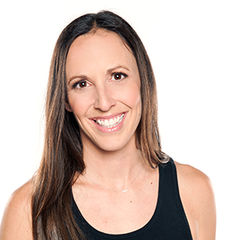As a health and fitness professional, you know what the New Year entails: resolutions. Your gym or studio becomes busier and new clients seek your guidance. It’s a time to welcome change and help people become healthier physically, mentally and emotionally.
While this is exciting, it is important for your clients to approach this journey with an understanding that behavior change is an on-going process that needs to be tackled in a thoughtful, meaningful way.
Here are a few questions I use to guide clients in the process of setting, implementing and achieving goals. Being prepared with open-ended questions helps you get a deeper understanding of where your clients have been and how they see themselves reaching their goals.
What does your client want to accomplish with his or her resolution?
With a general question like this, clients often give a general answer, such as, “I want to lose 30 pounds.” Don’t stop there—probe further. Ask your client how losing 30 pounds will affect his or her physical health, quality of life, even her job. Clients are more likely to adhere to a program if they feel deeply connected to the outcome.
Is this the first time your client has aimed for this goal?
You’ll learn if your client has tried to lose weight before and what did or did not work. Understanding this background information is critical because you learn about things your client likes to do and the habits that are easier to stick to.
You’ll also get to see how your client views personal successes and what throws him or her off course; for example, inconvenient timing of workouts, lack of support from family members and poor planning can all halt progress. Having an understanding of your client’s health cycle is important to help create new patterns for success.
What small goals can you create together that will help your client reach his or her bigger goal?
You can’t get to the top of the ladder without stepping on the individual rungs. Spend some time brainstorming with your clients about little things they can do on a daily basis that will help them achieve their goals. The goal of losing 30 pounds, for example, can be overwhelming. Making smaller goals that are easy to implement helps build confidence without increasing the likelihood of feeling overwhelmed.
Have your clients explain a typical workday and weekend day. Look for key issues in their answers that deal with the workplace. If they are spending too much time sitting, provide options such as a standing desk, stair-climb challenges or prompts set on the computer to remind them to get up and move. Discuss their eating habits, both at work and at home. Learn about their responsibilities after work, caring for kids, pets, etc. Together, come up with a few goals that they think are realistic and attainable. Consider that just one small goal might be all a client can manage at a time. That’s totally fine. Remember, you want your clients to experience success no matter how small. If they are consistent with a particular behavior change for 21 days, consider adding another goal.
How can your client assess his or her progress?
The two to three hours a week you spend with an individual client isn’t much. While you’ll provide check-ins and support, you essentially want your clients to self-monitor their behaviors and their mindset. I like to include a journal with the first package a client purchases. I ask the client to reflect nightly and list at least one positive thing that happened because of his or her commitment to the program. Online trackers are also great tools that keep people accountable.
As the trainer, make sure you are checking in weekly on this segment. If your client is starting to slip in one area, be proactive and make a change. Don’t ignore it or it will spiral out of control. Stress that there will be times when things aren’t within your client’s control; he or she will miss a workout, or be stuck with unhealthy food options. These are small potholes to go around—not road closures. After analyzing your client’s patterns, you might decide that this is an ideal time to reevaluate and set some new goals.
Remember, the New Year can bring excitement for some and anxiety of others. Taking time with your clients to create meaningful goals is the first step toward success. Cheers to a healthy, happy and successful 2017!




 by
by 











 by
by